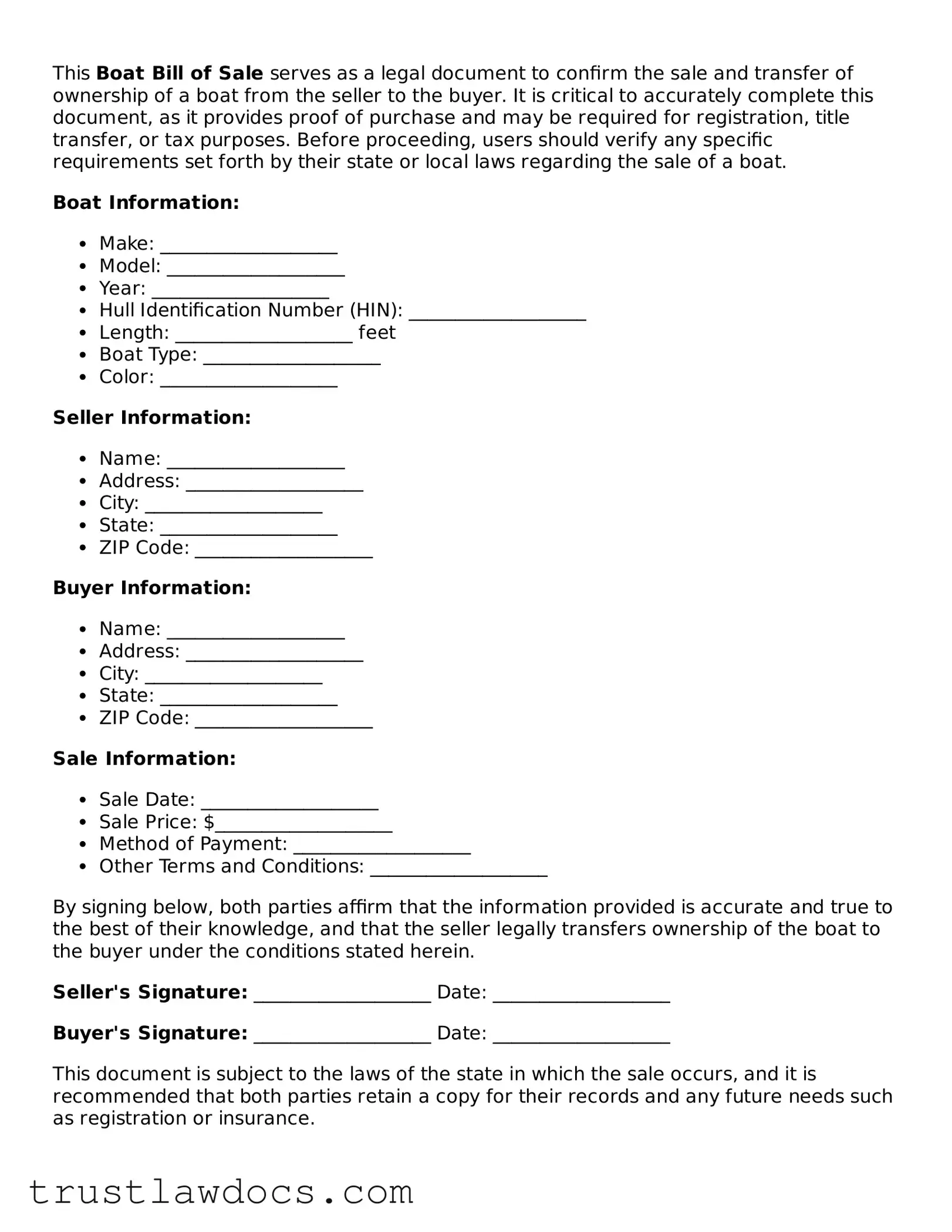What is a Boat Bill of Sale?
A Boat Bill of Sale is a legal document that records the sale and transfer of ownership of a boat from a seller to a buyer. It includes critical information such as the boat's description, the sale price, and the names and signatures of both parties involved. This document serves as proof of purchase and can be important for registration and taxation purposes.
Why do I need a Boat Bill of Sale?
You need a Boat Bill of Sale to legally document the transaction and ownership transfer of the boat. It protects both the buyer and the seller by providing a recorded agreement of the sale terms. It's also necessary for the buyer to register the boat under their name and might be required for insurance or financing purposes.
What information should be included in a Boat Bill of Sale?
A comprehensive Boat Bill of Sale should include the date of the sale, names and addresses of the buyer and seller, detailed description of the boat (including make, model, year, hull identification number (HIN), and length), the sale price, payment method, and any warranties or conditions. Both parties must sign the document, sometimes in the presence of a notary public.
Is a notarization required for a Boat Bill of Sale?
Notarization requirements can vary by state. While not all states require a Boat Bill of Sale to be notarized, having it notarized can add an extra level of legal protection and authenticity to the document. Check your local state regulations to determine if notarization is necessary in your case.
Can I create a Boat Bill of Sale on my own?
Yes, you can create a Boat Bill of Sale on your own. There are templates available online that can guide you. However, make sure that the form you choose complies with your local state requirements and includes all necessary information. For peace of mind or if your situation is complex, consulting with a legal expert might be beneficial.
How does a Boat Bill of Sale protect the buyer and the seller?
For the seller, a Boat Bill of Sale provides proof that the boat was sold and ownership was transferred, releasing them from liability or future obligations related to the boat. For the buyer, it serves as evidence of ownership, which is essential for registration and insurance. It also assures the buyer about the boat's legal status and any agreed-upon conditions of the sale.
What happens if I lose my Boat Bill of Sale?
If you lose your Boat Bill of Sale, contact the previous owner to see if they have a copy. Sometimes, it may also be possible to obtain a duplicate from the state agency where the boat was registered, provided the bill of sale was filed with them. Keeping a digital copy of the document can prevent such issues.
Does a Boat Bill of Sale need to be filed with the state?
In most cases, a Boat Bill of Sale needs to be presented to the state's boating authority or a similar entity when the new owner is registering the boat. Whether it needs to be filed directly with the state varies by location. Always check with your local requirements to ensure compliance.
Can a Boat Bill of Sale be used for boats of any size or type?
Yes, a Boat Bill of Sale can be used for boats of any size or type, including but not limited to sailboats, motorboats, canoes, and jet skis. Ensure that the document accurately describes the boat being sold, as different types of boats may require different details to be included.
